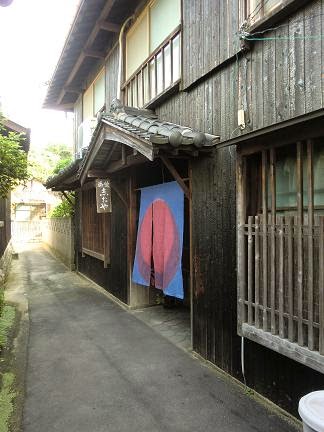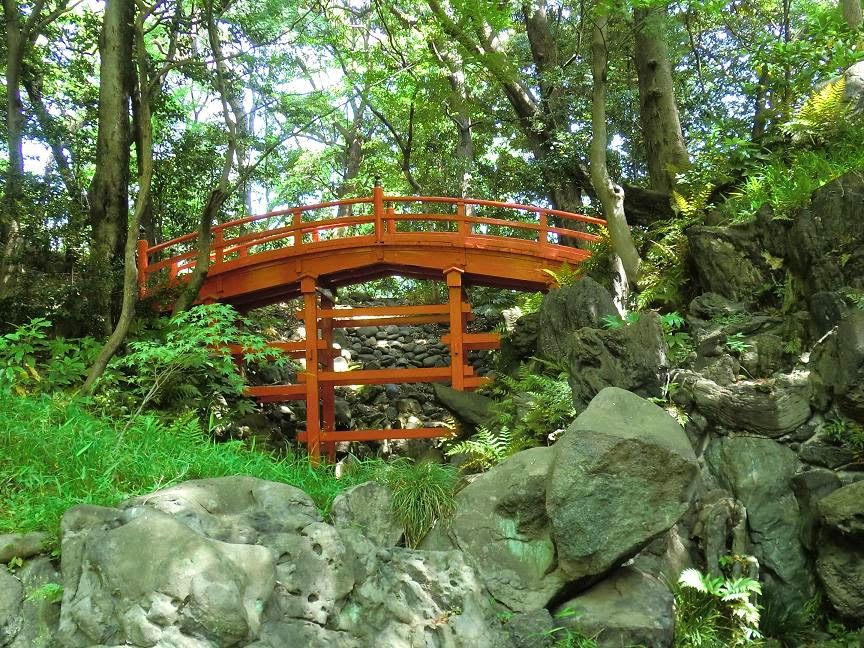 |
| Copper smeltery at Inujima island |
First we visited Inujima.
The most remarkable art work on Inujima was made inside of closed copper smeltery, built 1909. It was operated only 10 years. The scenery of tall chimneys and heavy walls made by red bricks which many parts were collapsed and covered by trees and leaves gives you feeling of desolation. Also the contrast of calm sea and the smeltery where once many workers were working was something. The museum was built inside of the architecture. The concept of the art work was about life of Mishima Yukio. He is a famous writer who committed suicide at the building of the Tokyo headquarters of the Eastern Command of Japan's Self-Defense Forces after his speech of Nationalism. His life and historical background of this smeltery were well matched.
 |
| Kusama's pumpkin at Naoshima island |
Unfortunately since we had to lined up to see this work we gave up seeing other art works because of the shortness of time for a ferry to Naoshima island. If you are planning to go this island I recommend you to take 1 full day visit for this island.
 |
| Japanese inn "Shioya" |
Next day we visited Chichu Art Museum, Lee Ufan Museum, Benesse House Museum and Art House Project in Naoshima. View of the Seto Inland Sea from Benesse House Museum was magnificent. Islands floating on spacious ocean...I could understand the thought of pirates existed long time ago running around the sea in this area. Most of the art works placed there made me realized the relationship of human activity and nature. The artworks existed harmoniously with this environment.
 |
| The view of Seto Inland Sea from a ferry |
Well, time passed slowly and calmly at Setouchi.





